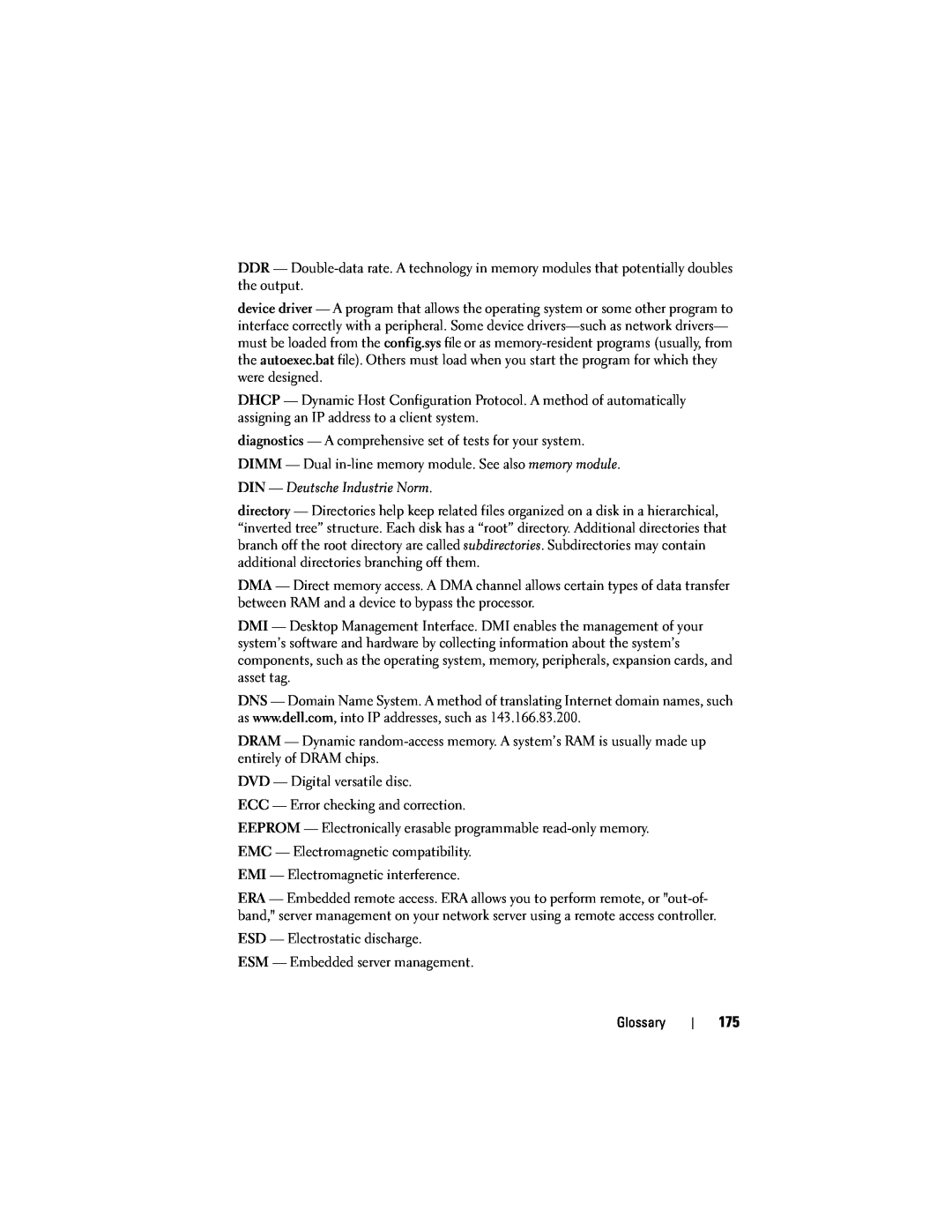DDR —
device driver — A program that allows the operating system or some other program to interface correctly with a peripheral. Some device
DHCP — Dynamic Host Configuration Protocol. A method of automatically assigning an IP address to a client system.
diagnostics — A comprehensive set of tests for your system.
DIMM — Dual
DIN — Deutsche Industrie Norm.
directory — Directories help keep related files organized on a disk in a hierarchical, “inverted tree” structure. Each disk has a “root” directory. Additional directories that branch off the root directory are called subdirectories. Subdirectories may contain additional directories branching off them.
DMA — Direct memory access. A DMA channel allows certain types of data transfer between RAM and a device to bypass the processor.
DMI — Desktop Management Interface. DMI enables the management of your system’s software and hardware by collecting information about the system’s components, such as the operating system, memory, peripherals, expansion cards, and asset tag.
DNS — Domain Name System. A method of translating Internet domain names, such as www.dell.com, into IP addresses, such as 143.166.83.200.
DRAM — Dynamic
DVD — Digital versatile disc.
ECC — Error checking and correction.
EEPROM — Electronically erasable programmable
EMC — Electromagnetic compatibility.
EMI — Electromagnetic interference.
ERA — Embedded remote access. ERA allows you to perform remote, or
ESD — Electrostatic discharge.
ESM — Embedded server management.
Glossary
175
